Technology
Services
Resources
It can produce music, create digital art, and even compose text in the style of specific writers. But since its public debut back in late 2022, generative AI has been met with skepticism—entirely reasonable skepticism, we might add—both from within and outside of the digital advertising world.
Given the mixed feelings around this new technology, we wanted to better understand how marketers and advertising teams are thinking about its role in the future of digital advertising. In surveying more than 200 marketing and advertising professionals—spanning agencies, non-profits, and publishers—we found that 86.6% of them believe AI will radically transform the industry in the next 3 to 5 years. At the same time, 28% of teams aren’t using this new technology at all.
This is a notable, though not unsurprising, disconnect. With such ambivalence towards this new tech, it makes sense that its use is varied. But, given widespread belief that it will radically transform the advertising landscape, it’s a tool that can’t be ignored.
Today, we’re digging into everything an AI skeptic should know: What the risks are, how to address them, and how your team can embrace (or, at minimum, dip their toes into) its possibilities. Ready? Let’s dive in.
From questions around its regulation, to concerns over how it might spread mis- or disinformation, to the threats it poses to content authenticity, there are plenty of reasons to be wary of generative AI. And in order to experiment with (and eventually leverage) this new tech effectively, it’s important to understand the specifics of its liabilities:
First, the US does not yet have any specific legislation to articulate AI regulation, though it’s something that has been a hot topic in the past several months. With both the White House and Congress showing their support for regulation (not to mention Open AI CEO Sam Altman’s direct plea to lawmakers that AI be regulated), it’s likely we’ll see developments on this front in the near future. For advertisers, this lack of certainty makes using AI more complicated. Without knowing how—or how much—it will be regulated, it’s important that teams not put too many eggs in the proverbial AI basket.
Another risk of AI is the authenticity, quality, and validity of the content it produces. For instance, its role in spreading mis- and/or disinformation is of particular concern. This is recognized by misinformation experts and marketing professionals alike, with a Basis survey revealing that 99.5% of advertising professionals agree that generative AI poses a brand safety and misinformation risk for digital marketers. Couple this with the fact that more than half of advertisers believe consumers will find a brand less authentic if it uses AI-generated content in its marketing or advertising efforts, and it’s clear there is substantial concern over the quality of the content that can be produced by AI.
Despite these risks, there are ways to leverage this new tech in a way that combats these concerns head-on.
As we mentioned earlier, the best way to address the lack of tangible AI regulation is to take it slowly. Find ways to experiment with generative AI tools and use them effectively (more on that shortly!), while maintaining and leveraging your current set of tools and systems. Then, as details around AI regulation become more concrete, you can adapt your practices to ensure you’re compliant with these standards.
When it comes to combatting mis- and dis-information, it’s important to recognize where the content in a generative AI chatbot or image creator is coming from, and to do due diligence to ensure that information is accurate. For instance, if you ask generative AI for statistics or research, be sure to look up the original sources to confirm the validity of information. And, if you encounter anything that appears to be mis- or disinformation, be sure to flag it appropriately within whatever system you’re using.
Finally, to ensure the content you’re producing is authentic to your brand and brand voice, recognize the limits of AI. Though generative AI’s capabilities are impressive, the content produced lacks the nuance, expertise, and authenticity that’s inherent to human-created content. As such, we recommend against simply copying and pasting AI-generated content and slapping your brand’s name on it. Anything that’s been written or produced by AI should be carefully examined and edited by a human, to ensure it aligns with your brand’s distinct voice. Even better? Leverage AI for preliminary or supplementary materials, rather than using it to generate your most important content.
To make the most of the AI opportunity, it’s important to recognize the technology’s strengths as well as its weaknesses. Now that we’ve examined the risks of AI and how to address them, let’s explore how generative AI can be used effectivelyfor marketing and advertising efforts. You might consider experimenting with generative AI in service of:
If you’re in that 28% of teams not currently using AI, consider experimenting and playing with one of these uses—and don’t be afraid to pivot if it isn’t the right fit for you!
It’s clear that generative AI offers many benefits to digital advertisers. And, with tech leaders and advertising industries agreeing on the impact it will bring to the industry, it’s a force that can’t be ignored. By approaching this technology with a healthy balance of wariness and wonder, advertisers can begin to leverage this tech in a way that ensures a positive net benefit for their teams.
__
Hungry for even more insights on how digital advertising professionals feel about generative AI? Check out our new report, Generative AI and the Future of Marketing. In it, we share the results of our survey of over 200 marketing and advertising professionals, dig into the research on how AI fits in the digital advertising landscape, and analyze the potential impacts on the future of marketing.
Digital out-of-home (DOOH) is making quite a splash in the world of advertising. As of 2022, the global DOOH market was valued at $18.80 billion, and it’s forecast to reach $58.67 billion by 2030. That’s an increase of more than 212%!
With the many benefits the channel offers, it makes sense that it’s experiencing rapid growth. DOOH allows advertisers to connect with audiences when they’re outside of their homes, in contextually relevant environments, when they often don’t have their eyes glued to their phones (but do still have them handy to interact with elements like QR codes). Put simply, when used as part of a holistic omnichannel strategy, digital out-of-home allows advertisers to reach audiences in key moments of impact.
And, thanks to its digital nature, DOOH allows advertising teams to harness the latest innovations in adtech to maximize their return on ad spend (ROAS). From its targeting, personalization, and reporting capabilities, to the real-time bidding and automation offered by programmatic DOOH (pDOOH), this channel combines the best qualities of OOH with the power of digital advertising.
Even more, DOOH is ripe for creativity. We’re talking big, bold messaging, compelling carousels of images, mesmerizing motion, and more. After all, these are messages that people are often seeing on their way from place to place—what better opportunity to have fun with the creative elements to capture their attention?
Today, we’re sharing several of the most compelling digital out-of-home ads we’ve seen, and digging into why they stuck with us. Whether they succeeded due to a strategic use of video or a humorous approach, or by tailoring relevance to the specific moment, advertisers can learn a lot about the DOOHs and DOOHN’Ts of DOOH (sorry, we couldn’t resist!) from these ads.
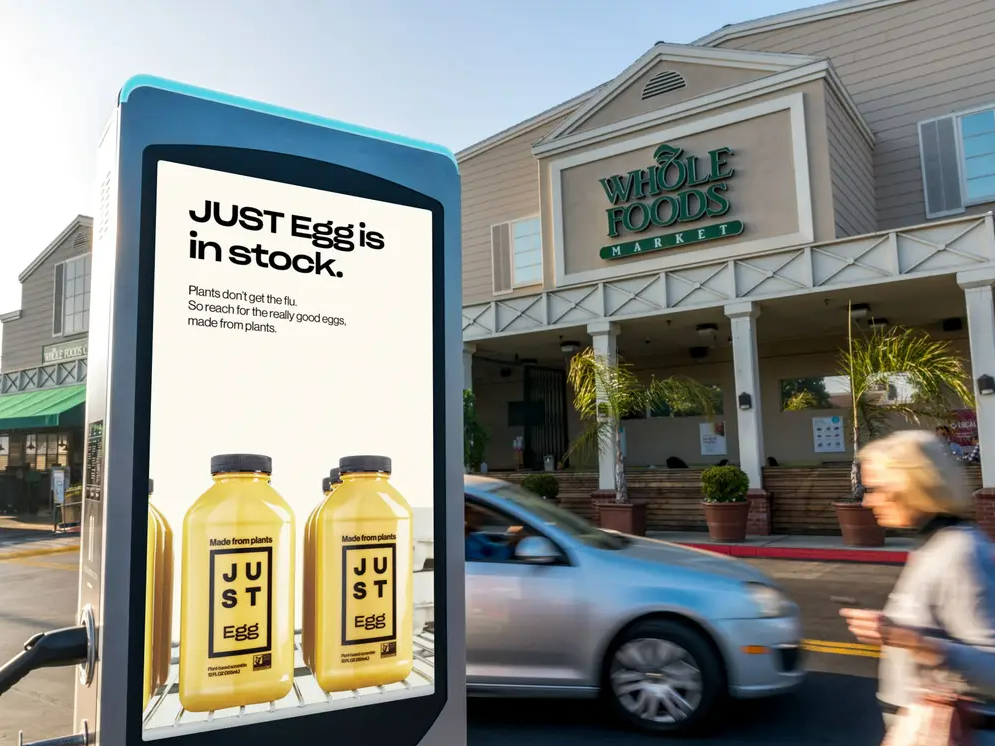
Remember when the price of eggs skyrocketed last year? While we were panicking about the future of omelets and quiches, the company JUST Egg saw an opportunity. They ran DOOH ads for their plant-based eggs, using messages like “Plants don’t get the flu” to elevate their product and brand at a strategic moment when the alternative (i.e., chicken eggs) was less available.
JUST Egg placed their messages in high-traffic, public places where they were truly relevant (think outside of a grocery store, or near a major shopping center). And, since they chose to use DOOH rather than a traditional OOH billboard or urban panel, they were able to leverage messaging that was relevant for a specific moment, and to make creative adjustments easily—by updating digital files—once the momentended (i.e. once the price of eggs returned to normal).
Our key takeaway: It pays to seize the moment. In other words, certain messages might make a more profound impact during certain times. Paying attention to the latest news, events, and trends can help ensure your brand is connecting with audiences in a way that’s meaningful to them when and where they are. And, using a channel like DOOH ensures that marketers can not only reach people in high-traffic, contextually relevant locations, but that they can also quickly adapt messaging if needed.
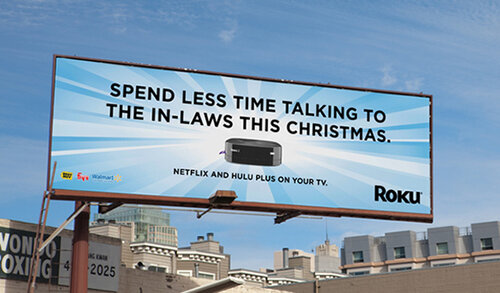
Ah, the holiday season. For most, it’s a time to be enjoyed with friends and family. And though we can’t speak for everyone, we know of a certain trope about spending time with in-laws (which might not be a trope if there wasn’t at least some truth behind it…).
For this campaign, Roku decided to keep it real and lean into these mixed feelings about the holidays. They ran digital billboards that joked about how consumers could use their streaming TV devices to escape time spent with in-laws—a message that, we’re sure, many could relate to. By using digital out-of-home, they were able to place their quippy creative on a big, bold display, and in a high-traffic location. And, by using the digital iteration of OOH, they ensured they could easily update their creative once the season ended, to avoid the ad looking outdated once the holidays were over.
Our key takeaway: Personalization looks different on a one-to-many channel like digital out-of-home. Rather than being tailored to specific individuals based on demographics, behavioral data, and other available personal data, DOOH is personalized to groups of people that are likely to encounter a specific ad. Here, Roku formulated a message that was relevant to the season and personal to many. By considering their target audience and the specific context and moment they’d see this ad, Roku was able to connect with viewers in a compelling way that felt personal.
To promote its new series, Resident Evil, Netflix took out a massive digital billboard in Times Square. But this wasn’t just any billboard—this was a 3D digital billboard, one which allowed Netflix to display a frighteningly life-like “licker” (a zombie creature from the horror series) moving about and seemingly smashing the “glass” it was contained by.
Our key takeaway: If we saw this while walking the streets of New York, it would certainly stop us in our tracks. Thanks to the digital nature of DOOH, there’s a significant opportunity for advertisers to use video and motion to captivate and mesmerize audiences. This could look like something as bold as the 3D billboard above, or could include using video footage (rather than a static image) to show off the features of your product in a more immersive way.

Remember how we talked about DOOH allowing teams to meet people with the right message, in the right moment? Red Bull took this to the next level with these digital signs. By using dayparting, or running ads at specific times of the day, Red Bull met viewers at the right time with the right message: “Feeling the afternoon slump? Red Bull can help!”
Our key takeaway: This is another example of the power of personalization on a one-to-many scale. By designing this ad specifically for the post-lunch moment, Red Bull was able to drive higher engagement than, say, a more generic ad that ran on a digital billboard all day.
With ad spend projected to increase dramatically over the next seven years, now is a great time for marketers looking to ride the DOOH wave to start testing and learning on the channel. Start with some of the ideas we outlined above: From seizing an interesting cultural moment, to using the latest digital tech to captivate audiences with motion, to leaning into the power of dayparting, DOOH offers a slew of ways to get creative in connecting with consumers.
__
Want to level up your DOOH expertise even further? Check out our guide, The Power of Place: Your Guide to Digital Out-of-Home Advertising. In it, we break down everything digital advertisers need to know about DOOH so they can leverage it effectively within their omnichannel media mix.
From vibrant billboards in urban centers, to point-of-purchase screens, to digital screens at EV charging stations, digital out-of-home advertising is everywhere.
Also known as DOOH, the channel allows advertisers a unique opportunity: Connect with consumers when they’re on-the-go, in contextually relevant environments, when they may be less reachable on their personal devices. And, thanks to the inherent benefits of digital technology, it lets them do so in a way that allows for targeting, tracking, optimizing, and measuring the success of those campaigns.
DOOH is an emerging channel—and one that’s quickly gaining steam. As such, more and more advertisers are embracing it as part of their larger omnichannel media strategies to reach audiences in key moments of impact. In this guide, we explore how savvy marketers can make the most of the DOOH opportunity. We dig into the latest trends, insights, and research to help advertisers leverage the power of place in their DOOH campaigns.
In this guide, you’ll learn:
Ready to level up your digital out-of-home advertising expertise? Fill out the form to download your copy of the guide today!
What comes to mind when you think of summer? Perhaps it’s watermelon slices after an afternoon spent with your beach volleyball crew, popsicles enjoyed while sitting on the edge of the pool, or campouts and picnics with friends and loved ones (and s’mores in abundance—duh!)
This time of year, the holiday season tends to be the furthest thing from most people’s minds. Then again, advertisers aren't most people. Before we know it, we’ll be rounding out September. Halloween will be just around the corner, with many other major holidays close on its tail. For digital advertisers looking to rock their holiday campaigns this year, a bit of planning amidst the summertime fun can go a long way in setting those campaigns up for success.
Read on to learn more about why advertising teams should start their holiday campaign planning now, and how this planning can ensure the months ahead are filled with merriment rather than mayhem.
If you take one lesson away from all this, make it this one: don't wait to get started!
Seriously. If you feel like this year has already flown by, buckle up—because the “holiday season” is creeping up earlier each year. This is driven in part by the growth of e-commerce, as well as shifts in consumer behavior. More and more shoppers are concerned about prices increasing as the holidays get closer, product availability, and potential shipping delays, leading them to begin their holiday shopping earlier in the year. For digital advertisers, this means it is essential to plan proactively for holiday campaigns.
“But what exactly should we plan for?” some advertisers might wonder. Though this will vary depending on the goals, scale, and complexity of your campaign(s), here are some broad questions to consider:
These questions are a great place to start. But they’re just that—a place to start. Luckily, for those looking for more, we’ve got you covered.
When it comes to holiday campaigns, intentionality and proactive planning pay off greatly in the long term. And conducting that planning in an organized and strategic way makes the process both fruitful and efficient.
So here’s our early gift to you: An ultimate holiday advertising checklist to help with your planning, buying, and reporting this year. The checklist covers everything you need to know (and do!) to ensure a successful holiday season, including key dates to plan for, how to make the most of your data, considerations for short and long-term goals, setting up your measurement and reporting systems, and more.
To sum it up: With this checklist, your holiday campaigns are sure to be elf-ing amazing.
Fill out the form to download your copy today!
What do the Star Wars movies, the novel “To Kill a Mockingbird,” and Converse Chuck Taylors all have in common?
They’re classics. Never go out of style. Oldies but goodies. Each and every one has stood the test of time—and for good reason.
Another thing we’d add to this list? Broadcast radio. Yep, you heard that right. Whether it’s blasting the Billboard Hot 100 hits in your car on a cross-country road trip, blaring at the local bar in your hometown, or serving as background noise to the weekend project you’re tinkering on in your garage, broadcast (aka traditional) radio is part of the soundtrack of our lives.
Sure, digital audio may be getting more airtime these days (it is digital advertising’s fastest-growing category, after all), but AM/FM radio is still a force to be reckoned with in the audio world.
Today, we’re exploring the latest broadcast radio stats and digging into why savvy marketers are using it as part of their holistic media mix.
Ready to rock ‘n roll? Let’s dive in.
Before we explore how traditional radio fits within an omnichannel strategy, let’s take a look at some of the most recent stats on the channel:
Beyond accounting for a substantial amount of media time, having a powerful reach, and amassing the majority of total audio ad spend, audiences deeply connect with traditional radio. In fact, 51% of listeners say they’re more trusting of radio and podcast advertisers than on any other medium.
“Okay, cool,” some marketers might say. “Sounds like traditional radio still slaps. But what’s the best way to utilize it?”
We’re so glad you asked! We’re total proponents of using traditional radio as one of many channels within a holistic, omnichannel campaign. With its significant reach and established credibility, it’s a great way to connect meaningfully with audiences when and where they’re listening, to build broad awareness of your brand or product, and to tell your story in your own words.
But make no mistake—we certainly don’t suggest throwing all your other channels (or any, for that matter) out the window. Like most advertising channels, broadcast radio works best when used as part of an omnichannel approach. Though traditional radio has many benefits, it is less measurable than digital channels like display, mobile, video, and audio, and is best used as part of multi-channel campaigns.
So, what might this look like in practice? One way radio could be used is to expand reach within a holistic digital audio campaign. This could involve running ads in digital content like podcasts and streaming music, as well as on traditional AM/FM radio.
In a more omnichannel context, it could mean running broadcast radio ads, as well as using geotargeted digital out-of-home ads, to build broad awareness and drive consideration for your brand or product. Other channels—say, social media, connected TV, or podcasts—could then be used for lower-funnel ads (and retargeting) to drive conversions.
Thanks to advancements in programmatic technology, a good DSP will allow you to tap into all of these types of inventory through a single sign-on platform. In Basis, for example, advertisers can plan, buy, and measure programmatic radio buys within the context of their larger omnichannel campaigns.
Though podcasts, streaming music, and other forms of digital audio are booming, traditional radio is still a prominent player in the world of audio advertising. When used as part of a holistic audio or omnichannel strategy, broadcast offers advertisers the ability to connect with listeners in a variety of locations and contexts. And, by harnessing the power of programmatic broadcast radio, marketers can tap into this channel in an automated way and measure the results of their radio ad spend.
__
Now that you know all about how to leverage broadcast radio in your omnichannel campaigns, why not become an expert in digital audio as well? Check out our guide to digital audio advertising for everything you need to know.
While swifties are enjoying their Eras era, the world of adtech is grappling with its identity crisis era. Under pressure from regulators and consumers alike, advertisers are working to balance the demand for personalization with the need for increased data privacy. And while many marketers might wish they could just shake it off (à la 2014 Taylor), the need for privacy-friendly advertising solutions isn’t going anywhere.
If, like TSwift, you know this challenge all too well, then this post is for you. Though there’s no quick fix to the identity crisis, there are tools and solutions that can help.
One of the most powerful solutions for advertisers to have in their identity crisis toolkit? Digital advertising automation. Today, we’re exploring how advertising automation can help marketers survive—and, dare we say, thrive—as they navigate the identity crisis.
As we wrote this post, we couldn’t help but notice how seamlessly TSwift references and puns slipped their way into it. Maybe it’s because she’s secretly a marketing whiz; or perhaps it’s because we’ve been spending hours each day bingeing videos from her Eras tour. Whatever the reason, buckle up for a deep dive into how automation can help your team through the identity crisis—as told through a collection of Taylor Swift lyrics, song titles, and gifs.

Let's dig in.
Long story short: the conflicting demands for increased data privacy and for personalized advertising experiences are coming to a head.

Was Taylor Swift talking about these competing pressures when she wrote this line?
To add a bit more detail: Over the past several years, more and more data privacy-focused regulations and changes have popped up (both in the US and across the globe), including the impending deprecation of third-party cookies in Google Chrome.
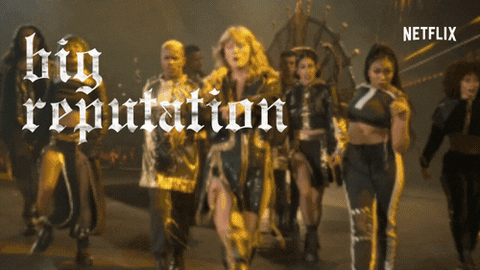
Who knew third-party cookies could develop such a big reputation?
Though there’s a lot of hype around Google, other browsers have long since parted ways with third-party cookies. Couple this with the recent explosion of privacy-related legislation and regulation and the fact that 86% of consumers say they have a growing concern about data privacy, and it’s clear that now is the time for advertisers to explore privacy-friendly solutions.
To make things even more complex, consumers still want personalized advertising experiences from brands and companies. In fact, 90% of consumers say they enjoy receiving personalized offers, and 56% expect all offers to be personalized.
It’s a perplexing problem to address. How can marketing teams adapt to the identity crisis and balance the complexities of today’s digital media landscape and still provide personalized advertising experiences that resonate with audiences? It’s a question we’re all figuring out together—but let’s explore how digital advertising automation can help.
Advertising automation is a term that encompasses a wide range of technologies and strategies aimed at optimizing the campaign process from start to finish. And if it sounds like something out of your wildest dreams, we get it. We’re enchanted by it too (Too many TSwift song references in a row? Sorry, [we’re] not sorry!) Especially within the context of the privacy-first transition, automation can simplify marketers’ jobs in many ways:
In the privacy-centric present, first-party data is of the utmost importance. Since it’s data that audiences willingly give to brands and companies, it is inherently privacy-friendly and allows for accuracy in personalization and targeting. As such, it’s something that, in the words of Taylor Swift, will never go out of style.
But what does automation have to do with first-party data? Since it is collected and housed in a customer relationship management (CRM) platform, the process of uploading this CRM data can often be complicated and time-consuming. By using an advertising automation platform with built-in integrations that allow direct uploading of CRM data, advertisers can speed up the process and access targetable audiences with greater ease.
The average advertiser uses seven platforms in a typical day and nine in a typical campaign. NINE. DIFFERENT. PLATFORMS.
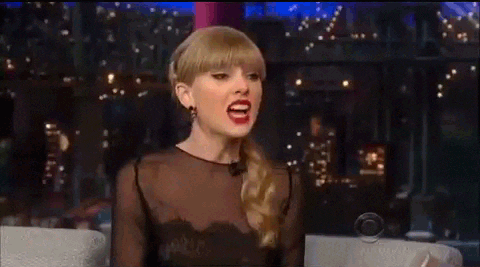
Same, Taylor. We feel the same.
Embracing advertising automation means consolidating those point solutions into a single, universal platform where teams can handle every stage of the campaign—from planning, to automated media buying, to reporting and billing.
Making this shift can significantly free up marketers’ time and energy, thus allowing and empowering them to test different privacy-friendly solutions and determine those that work best for their brand and audiences.
Remember how we mentioned that consumers not only want increased privacy, but also want personalized ads? Yeah, like TSwift once said, it’s a delicate balance (okay, we might be paraphrasing, but you get the gist). Luckily, advertising automation makes it easier to use the latest technological advances to reach audiences with personalized messaging.
For example, artificial intelligence-enabled predictive modeling can help advertisers to quickly identify audiences and serve them personalized placements. And dynamic creative optimization (DCO) offers the ability to automatically craft thousands of creative variations to serve to distinct audiences.

Just remember—if Taylor made it out of these woods, you can make it out of the identity crisis.
Advertisers today face a significant challenge: They must connect with audiences in privacy-friendly ways, while still personalizing ads based on individual consumers’ wants, needs, and preferences. Advertising automation is a powerful solution that can free up marketing teams’ time and resources, as well as allow them to create impactful, personalized advertising experiences.
To sum it up, identity crisis + advertising automation =
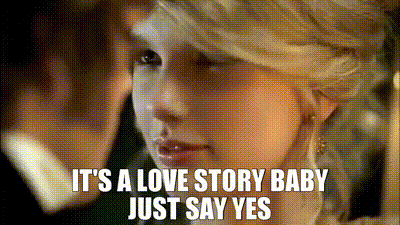
__
Learn more about the power of advertising automation with our guide Meeting the Moment with Advertising Automation.
Imagine going back in time and trying to explain TikTok to your 2009 self:
“No, not the absolute banger that Kesha just dropped—it’s a social media platform. You can find everything from funny animal videos, to product recommendations, to mouthwatering recipes, to trending dances. But you don’t find them just by following people you know; there’s an algorithm that places videos it thinks you’ll like alongside content from accounts you follow on a feed called a “For You Page” (FYP). The more you engage with a certain type of content, the more related content shows up on your FYP. Oh, and you’ll probably spend a movie’s length of time scrolling through it every day.”
Whether or not our past selves would have believed us, there’s no denying it: The TikTok boom has shifted the social media paradigm. And as users spend more and more time on the app, advertisers are presented with a unique opportunity to engage them.
So, how can advertisers take advantage of that opportunity? They can start by understanding the platform in all its uniqueness. Here are three big things to know:
Though video has been around for a long time, the ways we consume it are fluid and ever-evolving. Considering that our attention spans have shrunk over the past several decades, it’s no surprise that short-form videos, such as those found on TikTok, have risen in popularity.
Though videos on the platform are brief, they are highly engaging and create an immersive experience. On their FYPs, users are met with vertically aligned videos that take up the entirety of their mobile phone screens. And, since sound is a crucial piece of the TikTok experience (after all, one of the ways users can find new content is by looking at videos that use the same audio as the current TikTok they’re watching), most users scroll with sound on. In other words, TikTok provides a full-screen, sound-on experience.
This means that marketers can get their message in front of audiences and engage them through both video and sound. When your ad is playing, all eyes and ears are on you—it’s a great opportunity to show (rather than tell) what your brand or product is all about.
Not only is TikTok an engaging way to connect with audiences, but it also delivers across marketing objectives.
“Hang on,” some marketers might say. “Wouldn’t TikTok only work for upper funnel KPIs?”
Think again! Due to its truly unique nature, TikTok is shifting the way that users discover and engage with products, allowing advertisers to connect with audiences throughout the purchasing journey.
In fact, TikTok is changing the customer journey itself. Rather than a linear experience flowing from awareness, to consideration, to purchase and retention, TikTok’s path to purchase looks more like an infinite loop: Discovering, commenting, shopping, watching, referring, creating, liking, and so on happen simultaneously and continuously. And, TikTok audiences are more likely to purchase a product in the moment they see it.
With 49% of users saying they’ve purchased a product or service because of TikTok, it’s clear that the platform can drive tangible results for products and brands.
Perhaps the most important thing advertisers need to know about TikTok? Users crave authenticity. And it makes sense, right? No one wants an overly salesy ad in between silly cat videos and Pedro Pascal sandwich memes. This need for authenticity and realness isn’t purely anecdotal: 71% of global TikTok users prefer brand posts that are raw rather than over-polished, and 65% feel that “overly professional-looking” brand content feels out of place.
So, what should ads on TikTok look like? Here are a few recommendations for effective creative tactics:
What started as a place to catch up on the latest viral trends and learn new dance moves has exploded into a captivating and powerful entertainment platform. With users spending more and more time on the app each day, TikTok offers advertisers a compelling opportunity to connect with audiences. And, by leaning into the style of the content on the app—raw, authentic, and real—marketing teams can make meaningful connections with consumers throughout their individual journeys.
Interested in learning even more about all things TikTok? Check out our webinar, Seizing the TikTok Advertising Opportunity. In it, you’ll hear firsthand from experts at TikTok about key advertising strategies, best practices, and more so your team can leverage the platform’s power effectively.
From Serial, to My Favorite Murder, to Pod Save America, almost everyone has a favorite podcast these days. In 2023, 38.3% of the US population will listen to a podcast each month—a number that’s steadily increased since Apple first released their podcast app in 2012.
Beyond their popularity with listeners, podcasts offer advertisers a unique opportunity to connect with consumers whenever and wherever they’re listening, within content they’re actively engaged with. Podcast ads also reach listeners on a wide variety of devices—from tablets, to mobile phones, to desktops and laptops, to smart speakers. Given these benefits, it’s no wonder that more and more advertisers are incorporating podcasts into their omnichannel media mix.
So, what should advertisers know about the state of podcast advertising in 2023? Read on to find out:
Podcast audiences exploded during the pandemic. In 2019, the number of podcast listeners in the US increased by 28% year-over-year (YoY), reaching 92.4 million; in 2020, that number grew by 32.4% to reach 107.7 million.
Though growth today is less rapid than a few years ago, podcast listenership is still steadily increasing. In 2022, there were 124.2 million podcast listeners in the US, and that number is forecast to reach 129.9 million this year.
Beyond this growth in listenership, time spent with podcasts is also increasing. In 2023, it’s forecast that the total US population will increase its time tuning in by more than 11%, reaching 25 minutes per day. For active listeners, that number is expected to reach 57 minutes per day.
And just what shows are folks listening to? As of January 2023, there were more than four million total podcasts registered around the world, spanning topics from sports, to true crime, to lifestyle, to news, and more. For advertisers, this provides a great opportunity to use contextual targeting to reach key audiences in a privacy-friendly way (because who’s going to be more receptive to a home security system ad than someone binge listening to a true crime podcast? We’ll wait…).
As more and more people tune into podcasts (and spend more time listening to their favorite shows), it’s no surprise that ad spend is following in kind. After all, advertisers want to connect with audiences where they’re spending time, and podcasts offer them the chance to do so within content that consumers are personally connected with.
Here are some key stats to know about the state of podcast ad spend in 2023 and where it’s projected to go from here:
Sure, they’re popular. And more and more people are listening. But why are podcast ads effective?
In short, podcast advertisements reach people as they engage with content that’s meaningful, and often personal, to them. When listeners spend hours tuning into a specific show, they’re building a connection with that show and its hosts. As a result, that host’s recommendation, or even an ad placed within an episode, will likely go a long way.
This phenomenon, dubbed the “audio trust halo,” is backed by research. A 2022 study by iHeartMedia found that 51% of respondents say they are more trusting of radio and podcast advertisers than advertisers on any other medium.
Beyond the “audio trust halo,” here are a few other stats that demonstrate how podcast ads are particularly resonant with audiences:
Everyone’s taking part in the podcast craze, but programmatic podcast activation is still an emerging market. eMarketer predicts that US podcast ad spending will surpass 29% of total digital audio ad spending this year, but only 8.3% of podcast advertising will be bought programmatically in 2023 (up from 3.3% in 2020).
However, as programmatic audio technologies evolve, more and more advertisers will take advantage of the benefits it offers: namely, the ability to place audio ads—in real-time—and to harness the power of advanced targeting, measurement, and optimization technologies to ensure those ads reach key audiences. A 2023 study forecasts programmatic podcast ad spend will triple by 2027. For marketers today, this means that there’s a big opportunity to get in ahead of the curve.
Podcast advertising offers a distinct opportunity to digital advertisers in 2023, allowing them to engage with audiences across their devices and in a variety of settings. And, with programmatic podcast ad spend gaining steam, more and more advertisers are utilizing this channel in an automated and data-driven way. Given its benefits, it makes sense that podcast advertising is forecast to continue to grow in the coming years.
—
Want even more insight into the audio opportunities available within to digital marketers? Check out our digital audio advertising guide for a deeper dive.
Imagine you’re back in high school (rough time, we know. But stay with us!). Your teacher just handed back a recent test, and your palms are sweating as you scan their feedback.
There, at the top of page two, you see it: “Mostly correct, but…” Ah, partial credit. If you were like us, you’d probably find yourself wondering, “Isn’t being close good enough?”
Fast forward to “adult” life (yikes), and there are certainly instances in which being close is more than enough…but there are also times when precision is key. In a space as complex as digital marketing, for example, a lack of precision can lead to misunderstandings and costly errors.
Today, we’re digging into an area where it pays to be precise: differentiating between connected TV (CTV) and over-the-top (OTT) advertising. Though these terms are sometimes used interchangeably, there are important differences to be aware of. Knowing what each refers to and how they differ will ensure your team is utilizing these channels effectively, and prevent an awkward situation in which an ad intended to run on a TV device ends up displayed on someone’s phone instead.
Ready to dive into all things OTT vs. CTV? Let’s begin.
Before we can explore the differences and similarities between OTT and CTV, we need to define each term individually. First up? CTV.
A CTV is any television set that is connected to the internet. CTVs include smart TVs, as well as TV sets that can access the internet via an OTT device, a set-top box, or a gaming device that serves as an OTT device.
The term CTV describes the device on which viewers are watching video content. As such, it’s not possible for someone to watch CTV on their phone, laptop, desktop, tablet, or other digital device, since none of those devices are TVs.
(Psst: There are tons of other words and acronyms associated with CTV that you might want to know about. Check out our connected TV advertising glossary to learn more!)
Now that we’ve established what connected TV is (and what it is not), let’s move on to OTT.
Where the term CTV describes a specific device, OTT describes a way that video content is delivered to users. Specifically, OTT is a method of delivering video content to users through the internet, rather than via cable, broadcast, or satellite. A few well-known providers of OTT content include Netflix, Hulu, HBO Max, and Disney+.
OTT advertising can happen just about anywhere. The same cannot be said of CTV (because, hey, how many people do you know that carry their TV sets around with them?)
Though there are ways in which CTV and OTT overlap, it’s important to note their key differences:
Though these terms are sometimes used synonymously, they are distinct. Just remember, all CTV is OTT, but not all OTT is CTV (kind of like how all squares are rectangles, but not all rectangles are squares).
“Okay, we get it,” some advertisers might say. “CTV and OTT are different. But why use them? What benefits do they offer?”
Well, more and more people are using CTV devices to watch video, and many people are turning to OTT content over traditional cable and broadcast providers. In short, both CTV and OTT offer advertisers the opportunity to connect with people when and where they’re watching video. Still not convinced? We’ll let the numbers speak for themselves:
With the explosion of people tuning into CTVs and tapping into OTT video content, it’s no surprise that ad spend has followed in kind. In 2022, US CTV ad spend grew by 23% year-over-year (YoY) and is projected to grow by 27.2% YoY in 2023 to $26.92 billion. And, subscription OTT ad spend is forecast to grow 50.5% YoY in 2023 and to reach $11.11 billion in ad spend in 2024.
Before we wrap things up, here’s a quick quiz to assess your knowledge on CTV vs. OTT:
Imagine you’re chatting with your coworker Larry. While discussing an upcoming campaign, Larry says, “Let’s include CTV ads in the mix! I saw one while watching the newest episode of ‘The Bachelor’ on my phone this morning, and it totally hooked me.” How do you respond?
If you chose answer B, congratulations! We can now officially dub you a CTV vs. OTT wizard: You know exactly what these terms mean, where they overlap, where they are distinct, and their top benefits.
—
Looking to expand even further upon your OTT vs. CTV advertising expertise? Our Connected TV Advertising Guide can help! In it, we dig into how to make the most of the CTV opportunity, CTV best practices and strategies, how to optimize towards key KPIs, and more.